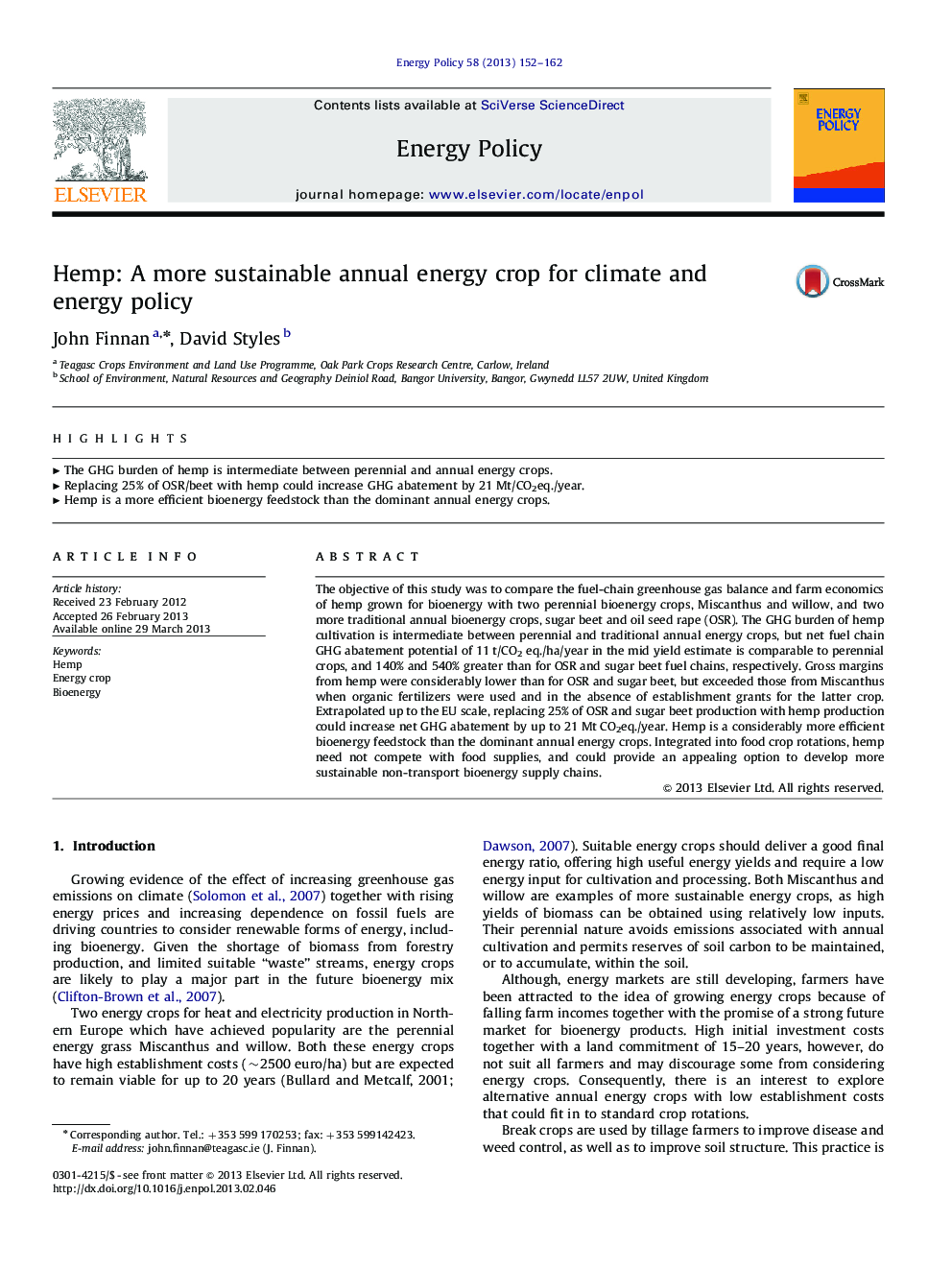| Article ID | Journal | Published Year | Pages | File Type |
|---|---|---|---|---|
| 995537 | Energy Policy | 2013 | 11 Pages |
The objective of this study was to compare the fuel-chain greenhouse gas balance and farm economics of hemp grown for bioenergy with two perennial bioenergy crops, Miscanthus and willow, and two more traditional annual bioenergy crops, sugar beet and oil seed rape (OSR). The GHG burden of hemp cultivation is intermediate between perennial and traditional annual energy crops, but net fuel chain GHG abatement potential of 11 t/CO2 eq./ha/year in the mid yield estimate is comparable to perennial crops, and 140% and 540% greater than for OSR and sugar beet fuel chains, respectively. Gross margins from hemp were considerably lower than for OSR and sugar beet, but exceeded those from Miscanthus when organic fertilizers were used and in the absence of establishment grants for the latter crop. Extrapolated up to the EU scale, replacing 25% of OSR and sugar beet production with hemp production could increase net GHG abatement by up to 21 Mt CO2eq./year. Hemp is a considerably more efficient bioenergy feedstock than the dominant annual energy crops. Integrated into food crop rotations, hemp need not compete with food supplies, and could provide an appealing option to develop more sustainable non-transport bioenergy supply chains.
► The GHG burden of hemp is intermediate between perennial and annual energy crops. ► Replacing 25% of OSR/beet with hemp could increase GHG abatement by 21 Mt/CO2eq./year. ► Hemp is a more efficient bioenergy feedstock than the dominant annual energy crops.
